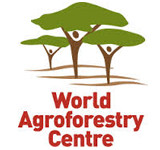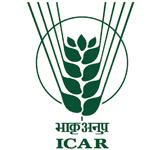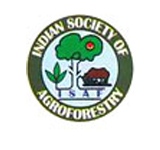
Vigyan Bhavan & Kempinski Ambience
10 - 14 February 2014
Delhi, India
blog

My name is Shea. I am a majestic tree born in savanna. My first fruit comes up after 15 years of life and I can breathe for centuries. You understand now why in the “Dioula” language spoken in Burkina Faso, ‘shea’ means “long life”.
I am always associated with crops and other trees in fields; and my privileged partners are women and children. During the raining season, they faithfully visit me and in turn I gratefully share with them the best of what I have to offer; my treasured children. I am support their ivelihoods; hence, my nickname: “women’s green gold”.
Traditionally, women process my fruit to extract nuts and produce a smooth butter for their consumption and marketing. My other parts such as my bark and leaves are mainly used by men and women as medicine, fertilizer for agriculture and also as a fetish to protect themselves from evil creatures.
I told you that women are my favourite partners. I am sometimes embarrassed because, they are not a homogeneous group: some are natives, some migrants, with age and ethnic differences. Access to my fruits is regulated according to these social differences. For that, increasingly, people are using fetishes and black magic such as thunderbolts, to prevent my fruit from being collected by thieves. You will understand later how this constraining tenure system evolved and how it affects myself, from a migrant family.
In a recent period, I saw several “White men” in our village explaining to local people that my reputation surpassed all the frontiers. They wanted to buy a big quantity of my nuts so that their people could also enjoy my bounty. At first sight I found their “Fair Trade” proposition good: my friends would gain more money and I would take care of more people around the world. I was far from suspecting that this would be a threat to me as my regeneration would decrease when people collected all my seeds from parklands.
What is worse, in 1996 I heard the groans of several women as the state had modified the land tenure law in the name of food security by encouraging “agri-businessmen” to easily buy large plots of land in villages. Then, natives started to sell their land, including those previously lent to migrants. My own field was sold by the lender without any advanced notice.
You will tell me that I should not be afraid, but that sale will decrease the chance of survival of my young sisters who are already suffering from the effects of climate change and from the greater use of sophisticated tractors that damage our roots. I run also the risk of being replaced by cash crops.
Beyond the environmental issues, it is also a matter of social justice. My former family had invested blood and sweat into this field for 20 years. They protected and conserved more than 30 young shea trees and only last year did they start harvesting their fruits. The most difficult thing is that the new owner has formally forbidden the women from my former family to collect shea fruits on his new property. He has told them that he is running a livestock farming business and that for he will need the shea fruits to feed his livestock.
I am still hopeful because I am confident that my human community has learned a lot about my phenology and has sufficient skills to manage me in these climates, and amid the current social and economical changes taking place. Indeed, with the National Institute for Agricultural and Environmental Research (INERA), they have conducted participatory research to learn about my ethno-varieties, and considered how knowledge of and preferences for ethno varieties can vary according to a person’s gender, status of residence, age, and ethnic group.
I really enjoyed the moments when the women and men in my community shared the results of these research activities under my shade. They were a bit tired, but enthusiastic about the participatory tools they have learned and the gender-specific results it had generated. The village chief and some elders were already waiting under my canopy when a woman from the community presented the results of women’s group work and a man those of the men’s group.
My women presented more detailed information than men because, as everyone knows, women have a very close relationship with the species therefore hold a specialized knowledge because of their gender, which attributes to them many shea-related activities. Men recognized that even they occasionally help their wives in the collection of shea nuts and the nut selling process.
The different uses women and men make of the shea tree came out clearly when they carried out a participatory matrix ranking exercise for shea ethno varieties. Women privileged the shea tree for its butter while men favoured it for its fruit’s pulp for direct consumption. Still, the men warmly thanked the INERA researchers for taking them into account for once in discussions relative to the “star of the day”: me.
Children also were included in the discussions. They demonstrated that beyond their social roles as mothers’ helpers, they too collect and sell shea nuts themselves to purchase clothes for ceremonies and candies for school.
In addition, the most of the identified ethno varieties of shea—and especially those preferred by women and men–are found in fields. Indeed, because of the threats of wild fire and trampling by livestock, shea fruit found in fallows and brush areas are small and shea yields have considerably decreased
As I am getting old, my fruit yield is also going down. How can my country’s food security needs and forestry requirements work in the same direction to allow agroforestry to support the livelihoods of our communities?
Working with local women and men farmers who are our caretakers, researchers should conduct more gender responsive investigations to allow our representatives to build on and elaborate more inclusive land tenure laws and efficient politics to perpetuate me.
The project “Threats to priority food tree species in Burkina Faso: Drivers of resource losses and mitigation measures” is part of the Bioversity’s Gender Research Fellowship Program funded by the CGIAR Research Program on Forests, Trees and Agroforestry.
Photo: Women under a shea tree in Yarci, Burkina Faso
Blogpost and photo by Mawa Karambiri, Gender Fellow hosted by INERA (Burkina Faso) – Karambirimawa(at)yahoo.fr
|
This post is entry nr #28 in our #WCA2014 blog competition. The five blogposts with the most and highest votes will receive a signed copy of the book "Trees for Life". The most popular blogpost will get an iPad.
This blogpost received 52 votes, with an average score of 5 (out of a max of 5).
Follow our #WCA2014 social reporting teamfollow our social reporting team via the #WCA2014 tag on Twitter, our blog and our Facebook page.
|






26 People have left comments on this post
Nice blog and well told story!
Thank you Rebecca, this story is what I’m convince that the shea tree would tell us. It was also how I felt everytime in my childhood, I went to collect shea fruits, important source of income and support for people’s livelihood.
‘Seeing like a tree’ – I love it!!
Very Good work Mawa. I am very proud of you. Keep it up.
It is a Very nice and original work.
Fabulous story! Well told! Moving! The tree would certainly have told exactly this story. Bravo!
This is indeed a very good story about Shea! Congratulations for being able to see yourself as the Shea tree!
Very interesting! Wonderful! I love it
It articulates complex issues in a simple and easy-to-follow way. Bravo!
Very good as written. Through this story you demonstrates the importance of Shea for the rural communities. congratulation
Yes Mawa, the climate is changing faster than we can cope, and even more faster than the trees and the forest can cope. We (humans) need to adapt and help the plant communities survive the pestilence around. I know we can, that’s why ‘Shea’ is calling on us. Thanks for the nice piece.
…really interesting, enjoyed reading this!
Great Blog Mawa!
Under this blog, reader could learn almost all problematic related to shea tree: rights, management, actors, threats, income generation and the place of this tree in women social and cultural life; I like it!!!
Courage and good luck!!
Bravo Mawa, t’as fait un récit très “poétique” et très clair. A travers ce blog, je comprends toute la place que peut occuper “shea” et tous les arbres pour les populations rurales…mais pas qu’elles.
Bon courage.
This blog has givem fascinating insights about the Shea tree – excellent.
Oui, Joelle Brams, Les arbres pourvoyeurs de Produits Froestiers Non ligneux comme le “Shea” sont très importants pour les moyens d’existence des populations rurales. mais aussi pour celles urbaine j’en convient car à côté de la consommation de ces produits, il ya de gros marchés nationaux et internationaux qui se créent et fleurissent avec ces produits. d’où l’intérêt des “White men” dont le Shea tree parlait ! Merci
What a wonderful way to look at gender relations — through the eyes of the resources that women manage together.
J’en tire pour leçon que ” de la recherche à l’art, il n’y’a qu’un pas d’imagination à franchir”. Merci de nous faire partager cette belle perspective. Bravo et bon courage pour la suite
Hi Mawa!
Beautiful tale that reveals the different aspects of Shea. Congratulations.
Congratulations on an original and creative approach to telling the story!
Congratulations Mawa..!! It was great reading experience and the story looks very inspiring the story of Shea is uplifting rural economy..!! My best wishes from India
Done! what an interesting article!
An wholesome multipurpose tree
Mawa,
Thank you very much for your very inspiring story about Shea. Do you also know that Shea has quite a soul and feeling? It is said to be very generous and feeling pity for human! People in my area report that Shea is providing its best production the year of famine, as to feed the human.
Probably this tree is among the trees that we meet in the paradise garden.
Congratulations for your participation
Pierre
Great blog Mawa!
Really enjoyed reading it
Tsega
Nicely said about ethno-varieties. Diversity in food also coming down. People have becoming comfortable with few food / fruits. We need save ethno-varieties and promote simple herbal medicines in our life.